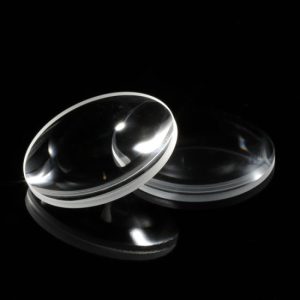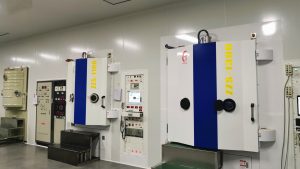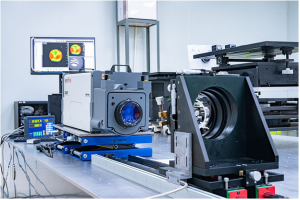Spherical lenses, aspherical lenses, and cylindrical lens pairs can all achieve laser collimation.
Aspheric lenses, on the other hand, do not introduce spherical aberration compared to spherical lenses due to their aspheric surface design. However, after passing through these two lenses, they can only become elliptical collimated beams. For optical systems that require circular beams, cylindrical lenses are required to round the spot. Cylindrical lenses are similar to spherical lenses in that they use curved surfaces to focus or diverge light, but cylindrical lenses only have the ability to converge or diverge in one direction and do not affect light in the vertical direction.
If a symmetrical output beam is to be generated, the focal ratio of the two cylindrical lenses should be the same as the ratio of the major axis to the minor axis of the elliptical beam emitted by LD. Like standardized collimation, place the diode at the focal point of two lenses, and the distance between the lenses is equal to the difference in their focal lengths.
The divergence rate of laser diodes can be very high, which may pose challenges when attempting collimation, as the divergence rate directly affects the allowable length of the system and the required lens size. The focal length ensures that the relative position of each component is fixed, so the lens focal length (f) and divergence angle of the collimated axis can be used( θ) Calculate the beam width (d) of each lens. Therefore, the aperture of each lens must be greater than the corresponding beam width.
However, cylindrical lenses cannot flexibly change the focus to adapt to the rounding of different elliptical beams (customized focal lengths are still expensive), so deformable prism pairs can be used to round the beams. Its disadvantage is that the optical axis will shift by a certain distance, and of course, the beam can also be rounded through a spatial filter. This method can achieve beam roundness, but its transmittance is based on.
Each plastic surgery technique has its own advantages. The requirements of the system for beam quality, transmitted light power, and device limitations determine the required shaping techniques for applications. The spatial filter significantly improves the circularity and quality of the beam, but the transmission power of the beam is low. The cylindrical lens produces a beam with good circularity, and balances circularity, beam quality, and transmission power. In addition, cylindrical lenses compensate for most of the beam astigmatism. The circularity of the beam provided by the deformable prism pair is not comparable to that of the cylindrical lens pair. The M2 value and wavefront error of the output beam are better than those of cylindrical lenses, but their transmission power is relatively low.




